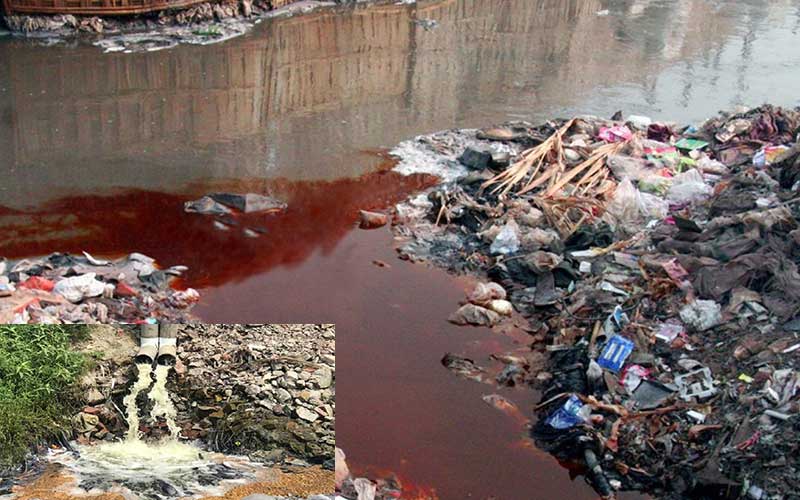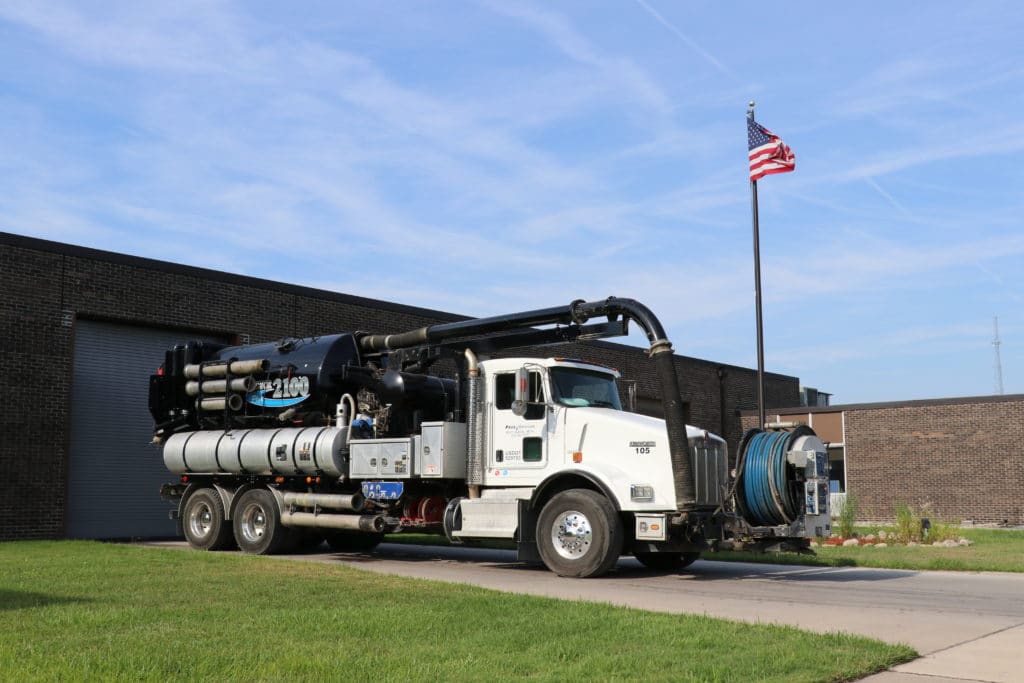Cutting-edge Industrial Wastewater Treatment Solutions: Safeguarding the Setting
Cutting-edge Industrial Wastewater Treatment Solutions: Safeguarding the Setting
Blog Article
Recognizing the Comprehensive Process of Fluid Garbage Disposal: Ideal Practices and Environmental Impact Considerations
The management of fluid garbage disposal is a multifaceted concern that calls for a complete understanding of numerous finest practices and their associated environmental impacts. From the kinds of fluid waste produced to the techniques employed for collection, treatment, and last disposal, each step plays a critical duty in guarding ecological communities and public health and wellness. As governing criteria evolve and modern technology developments, the discussion around these procedures comes to be significantly important. What ramifications do these changes hold for future sustainability efforts, and just how can stakeholders ensure that they are effectively resolved?
Types of Fluid Waste
Understanding the different sorts of fluid waste is necessary for effective management and disposal practices. Fluid waste can be broadly categorized into numerous types, each needing unique handling and therapy approaches.
Industrial liquid waste often includes unsafe products, consisting of hefty steels, solvents, and chemicals, generated during producing procedures. These wastes demand stringent regulative conformity to protect human wellness and the atmosphere. Domestic liquid waste mainly refers to wastewater created from families, including sewage and greywater, which, although much less hazardous, can still pose significant threats if poorly handled.
Agricultural liquid waste, consisting of overflow from farms, usually consists of plant foods and chemicals that can cause ecological destruction otherwise dealt with adequately. Clinical liquid waste, generated from health care centers, consists of infected fluids such as bodily liquids and chemicals, needing specialized disposal methods to avoid infection and ecological contamination.
Finally, oil and grease waste, generally produced by dining establishments and auto industries, can create serious clogs in drain systems if not taken care of appropriately. Comprehending these classifications helps with targeted strategies for treatment, conformity with guidelines, and reliable disposal approaches, inevitably promoting ecological sustainability and public health and wellness security.

Collection Methods
Efficient collection techniques are important for the correct monitoring of fluid waste, making sure that it is collected securely and effectively before treatment or disposal. Different strategies are utilized depending on the kind of liquid waste generated, the quantity, and the certain qualities of the waste.
One common method is making use of dedicated collection tanks or sumps, which are made to record fluid waste at the source. These systems frequently incorporate pumps that assist in the transfer of waste to larger storage containers or therapy centers. Furthermore, mobile collection devices furnished with vacuum technology are used in circumstances where waste is generated periodically or in hard-to-reach places.
For industrial setups, closed-loop systems can efficiently minimize spills and leaks, permitting the healing and reuse of fluid waste. It is additionally necessary to train employees on proper collection protocols to minimize threats connected with harmful substances.
Additionally, applying regular maintenance timetables for collection tools makes certain ideal performance and safety. The assimilation of sophisticated tracking systems can enhance collection performance by supplying real-time data on waste degrees and possible risks. Overall, reliable collection methods are foundational to lasting fluid waste management methods.
Therapy Processes
Treatment procedures play a vital duty in the monitoring of liquid waste, transforming potentially harmful products into risk-free effluents or reusable sources - liquid waste disposal. These processes can be extensively classified right into physical, chemical, and biological techniques, each customized to address particular pollutants existing in the waste stream
Physical treatment techniques, such as sedimentation and filtration, work by getting rid of suspended solids and particle matter. These strategies are typically the first step in the treatment chain, properly lowering the load on succeeding procedures. Chemical therapies entail using reagents to neutralize dangerous compounds, precipitate hefty steels, or oxidize natural the original source contaminants, therefore improving the safety of the effluent.
Biological therapy procedures, consisting of activated sludge systems and anaerobic digestion, capitalize on the natural abilities of microorganisms to weaken natural issue. These approaches are especially efficient for wastewater including eco-friendly pollutants. Advanced therapy modern technologies, such as membrane layer purification and advanced oxidation processes, are significantly utilized to achieve greater levels of purification.
Incorporating a combination of these treatment techniques not just guarantees compliance with regulative criteria however likewise promotes ecological sustainability by recouping valuable sources from fluid waste.
Disposal Options
How can organizations ensure the secure and liable disposal of fluid waste? Efficient disposal alternatives are important for protecting public health and wellness and the setting. The primary techniques include land treatment, disposal, and incineration followed by discharge right into community wastewater systems.
Land disposal includes the cautious containment of fluid waste in assigned landfills, making certain that it does not seep into bordering soil or water. Incineration, on the various other hand, subjects liquid waste to high temperature levels, he said transforming it right into ash and gases, which call for appropriate purification to decrease emissions. This method appropriates for contaminateds materials that can not be treated through typical ways.
In instances where liquid waste can be treated, organizations may opt for chemical or organic therapy procedures to counteract hazardous components prior to discharging the dealt with effluent right into community systems. This path commonly lines up with governing needs, ensuring that the effluent fulfills safety criteria.
Ultimately, companies must conduct complete evaluations of each disposal alternative to identify its feasibility, considering variables such as waste composition, governing conformity, and potential dangers to health and the atmosphere. By selecting ideal disposal methods, businesses can contribute to a liable waste management method.
Ecological Impact
The environmental impact of fluid waste disposal is a critical factor to consider for organizations seeking to decrease their environmental impact. In addition, the discharge of unattended or inadequately dealt with waste right into surface waters can result in eutrophication, leading to oxygen depletion and the succeeding death of fish and other organisms.

To minimize these effects, companies need to adopt ideal practices such as carrying out strenuous waste therapy procedures, promoting recycling and reuse, and adhering to governing requirements. By taking an aggressive method to liquid waste administration, entities can significantly minimize their ecological impact while sustaining lasting advancement goals. Ultimately, an extensive understanding of the environmental influences connected with fluid waste disposal is essential for notified decision-making and responsible stewardship of natural deposits.
Final Thought
Effective management of fluid waste is important for securing environmental honesty and public health and wellness. By adopting finest practices in collection, disposal, and treatment, along with adherence to regulatory standards, the possibility for damaging contamination of ecosystems can be significantly minimized. Continuous improvements in modern technology and procedures contribute to lasting waste administration efforts. Ultimately, a detailed understanding of fluid waste disposal not just mitigates environmental impacts however additionally cultivates a dedication to liable source monitoring and ecological stewardship.
The administration of liquid waste disposal is a complex concern that requires a detailed understanding of different finest techniques and their linked ecological influences. From the kinds of liquid waste created to the methods employed for collection, treatment, and final disposal, each action plays a crucial function in guarding ecological communities and public wellness.The environmental effect of fluid waste disposal is a critical consideration for companies looking for to reduce their eco-friendly footprint. Ultimately, an extensive understanding of the environmental impacts linked with fluid waste disposal is crucial for notified decision-making and accountable stewardship of all-natural resources.
Eventually, a thorough understanding of liquid waste disposal not only mitigates ecological influences however also fosters a commitment to responsible resource management and environmental stewardship.
Report this page